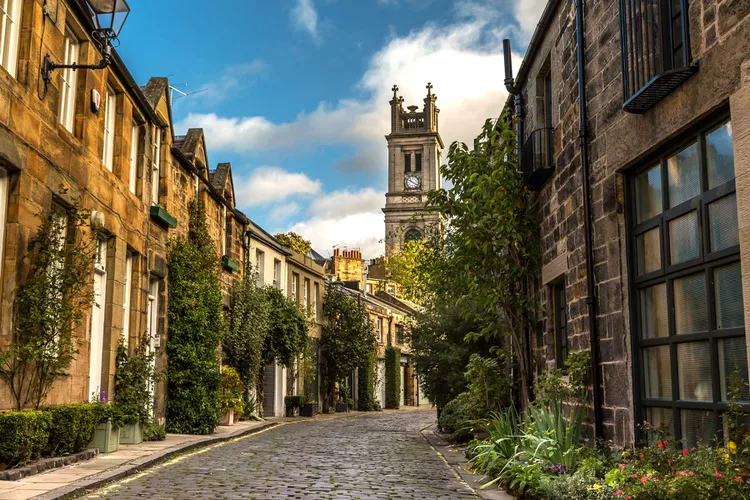Summary
Best Times to Visit Scotland
Scotland may be a small country — about the size of South Carolina — but it offers an impressive variety of destinations and landscapes. Edinburgh, Glasgow, Loch Lomond, Loch Ness, Ben Nevis, Glen Coe, and the Isle of Skye are all must-sees for anyone looking to experience the magic of Scotland. Therefore, to get the most out of your trip, choosing the right time to visit is essential.
Seasons in Scotland
Scotland’s seasons fall into three main categories:
- High Season: June to August
- Shoulder Seasons: April to May and September to October
- Low Season: November to March
Each of these seasons provides unique advantages and disadvantages, meaning that your priorities will greatly influence your decision on when to travel to Scotland.
Most Popular Time to Visit Scotland
A majority of travelers tend to visit Scotland during the warmer months. Tourist season in Edinburgh ramps up in June and peaks in August, with several major festivals occurring throughout the month, including the Edinburgh Art Festival and Edinburgh Festival Fringe. During summer, temperatures in the capital rarely surpass 70 degrees, making it an enjoyable time to explore the hilly city.
Furthermore, visitors can experience traditional events like the Highland Games, which date back hundreds of years. Enthusiastic locals host the Games, often incorporating traditional Scottish sports, food, music, and dance. The Braemar Gathering in September is especially popular, often attended by the British royal family.
Outside the summer months, the winter holiday season also draws many visitors. The celebration of New Year’s Eve, known as Hogmanay, attracts over 70,000 partygoers to Edinburgh each year.
Best Times to Visit Scotland for Smaller Crowds
If your goal is to avoid crowds during your Scottish vacation, consider traveling in the fall, winter, or spring. Most schools in the U.K. follow a summer break during July and August, so planning your trip outside of that period can help you avoid the large influx of tourists.
The Isle of Skye is particularly crowded in the summer; thus, visiting in the off-season can provide a more peaceful experience. Additionally, off-season travel increases the likelihood of spotting puffins in early spring and allows for stunning views of snow-capped mountains in winter.
Best Times to Visit Scotland for Good Weather
Scotland, much like the rest of the United Kingdom, isn’t particularly known for its weather. More often than not, it’s drizzly and overcast. However, when the weather cooperates, sunrises over Scottish glens or sunsets behind Edinburgh Castle are breathtaking.
For the best weather, timing your trip for late spring or early summer is key. According to the Scottish tourism bureau, the driest period is from March to May, with temperatures rarely dipping below 40 degrees Fahrenheit, although they do not often exceed 55 degrees either. Fall is equally beautiful, known for its stunning fall foliage.
Best Times to Visit Scotland for Lower Prices
As the temperatures decline, so does the number of tourists in Scotland, leading to lower prices. If affordability is a priority, consider traveling during the low season from November to March. While some historical sites may close due to weather, plenty of activities remain available, including skiing in the Cairngorms or exploring festive Christmas markets in Edinburgh. Lower prices also allow visitors the opportunity to enjoy a stay at one of Edinburgh’s finest hotels.
However, it is important to note that the holiday season around Christmas and New Year can be particularly busy; thus, travelers should plan carefully during this timeframe.
Best Time to Explore the Highlands
For the best sunlight and weather, the ideal time to head to the Scottish Highlands is during the summer, primarily between May and September. Post-October, conditions can be unpredictable, with cold temperatures, strong winds, and snowfall possible. However, the majestic, snow-capped mountains during winter create a picturesque setting. If you’re planning a winter road trip through the Highlands, be sure to pack accordingly and ensure your rental car is equipped for icy conditions.
Best Time to Visit to Avoid Midges
Travelers should note that from May until September, there is a significant chance of encountering midges, particularly in the Highlands. These biting insects thrive in humid and cloudy conditions, peaking in July and August. To avoid these pesky insects, it’s best to plan your trip between late September and early May.
Worst Times to Visit Scotland
Deciding on the worst times to visit Scotland largely depends on personal preferences. For those looking to avoid large crowds and midges, July and August are months best avoided due to high tourist attendance and elevated prices. August, in particular, is a very busy month in Edinburgh due to numerous cultural festivals, bringing millions of art lovers to the capital.
If your main objective is to find ideal weather conditions, winter months should generally be avoided. Characterized by gray skies, shorter days, and cold weather, winter in Scotland is more suited for cozy indoor pursuits rather than outdoor exploration.
To strike a balance between manageable crowds and pleasant weather, consider planning your trip during the shoulder seasons of spring and fall.




